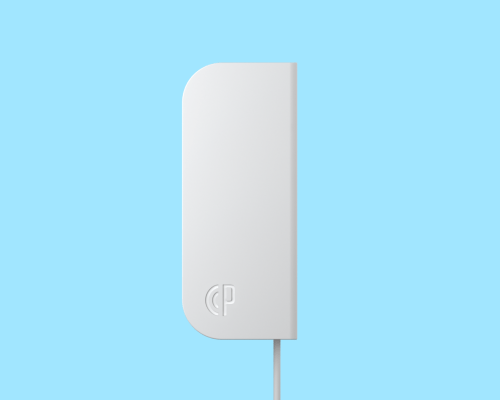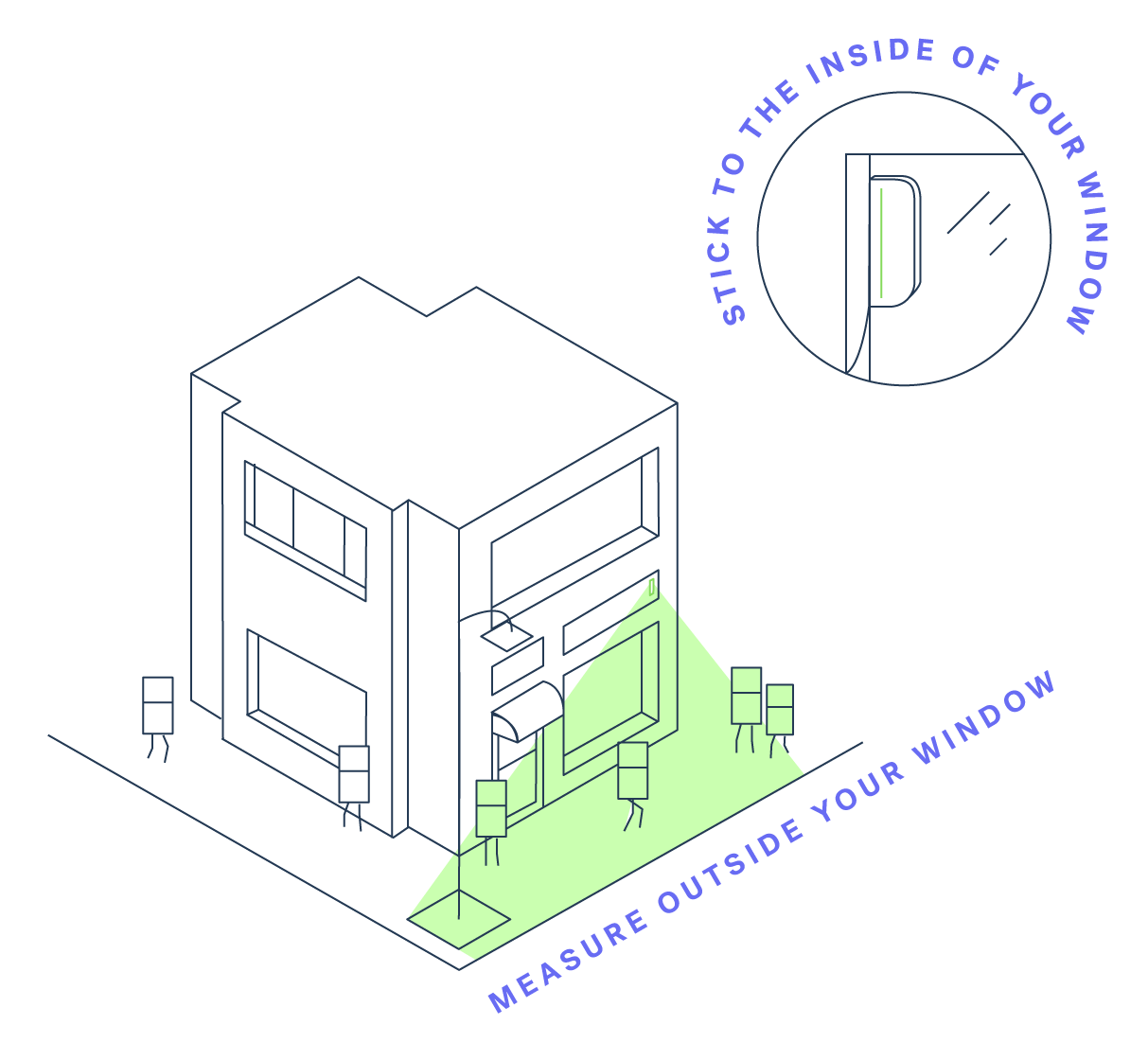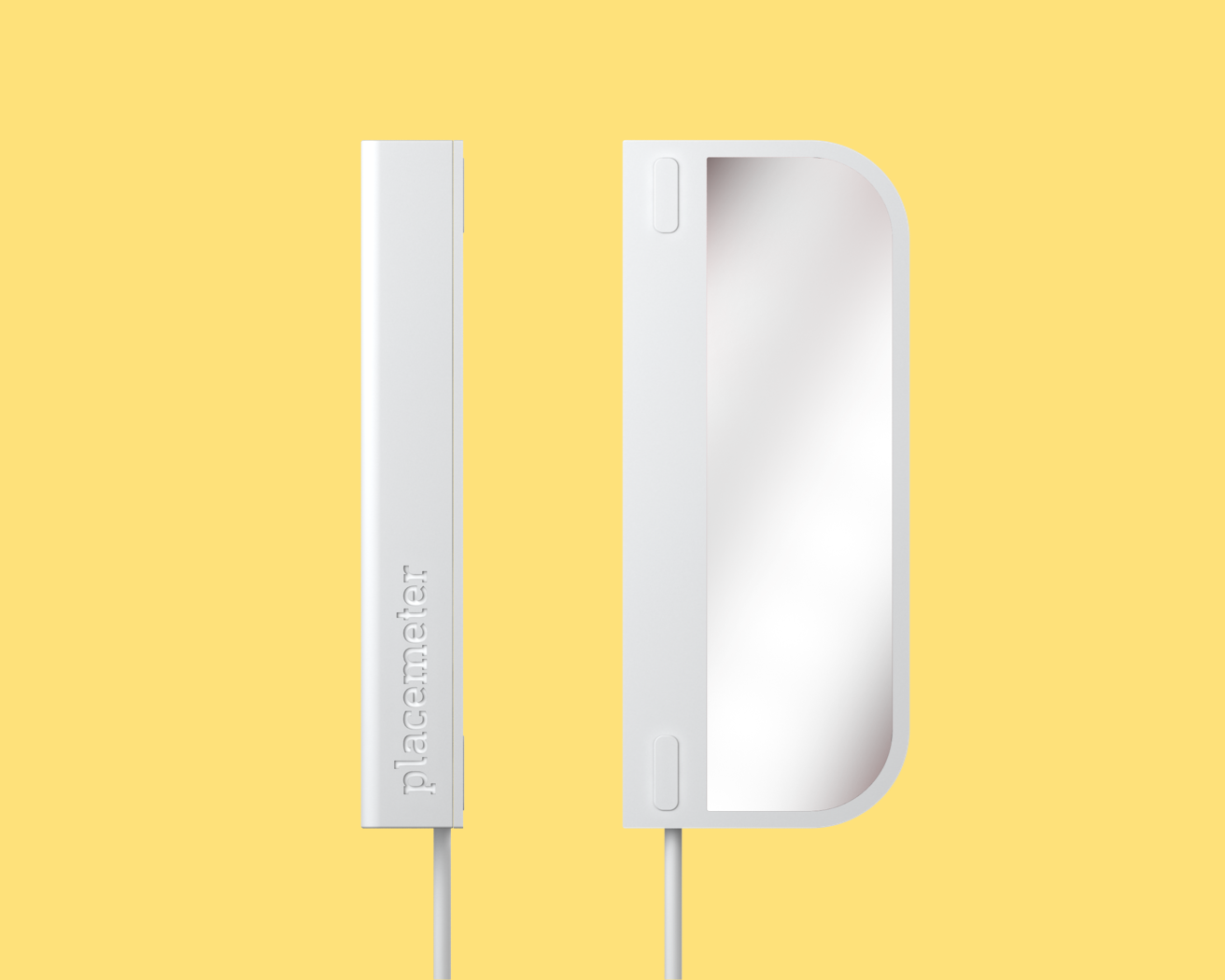Placemeter, the “urban intelligence platform” that launched earlier this year, wants to help businesses measure how many people walk past — and into — their stores. The company is officially launching its first sensor today. Until now, the company was using standard IP cameras.
With this new sensor, which will sell for $90, customers will be able to track all the movement in front of their stores — and hence see how their fancy new window dressings are helping to convert people who pass by the store into potential shoppers.
The sensor, which you should easily stick inside a window (it’s only 0.75 inches thick), does all the data processing locally and then send the results to Placemeter’s cloud service, where the customers can see the data in their dashboard. The new sensor can use the local WiFi network or an EDGE GSM connection to push its data into the cloud.
With this launch, Placemeter is also announcing a new pricing model for its service. Anybody can try the new sensor risk-free for 90 days. If you keep it after that, you’ll be billed $90. For this price, users will also be able to see the data from their first two video feeds for free. If users add more sensors or cameras to their subscription, the company’s monthly or annual subscription pricing kicks in.
“At just $90, our Sensor is less expensive by design than traditional security cameras or any other urban intelligence measurement tool, and now our free 90-day trial allows anyone to get started without a big upfront investment,” said Florent Peyre, Placemeter’s COO and co-founder in today’s announcement. “Placemeter’s mission is to help build stronger businesses, efficient cities, and innovative neighborhoods worldwide – starting by quantifying the movement of modern cities at scale. With our new free tier, it’s never been easier to access the urban intelligence data you need.”
Placemeter is also launching its API today. With this, businesses will be able to take the data from the sensors and cameras and then build their own dashboard or mash the data up with information from other sources. A store may want to correlate Placemeter data with its sales data, for example, or urban planners may want to see their data layered on top of a map or use it inside their geographic information systems. Placemeter users will get free access to the API.
To help its bigger clients, Placemeter is also launching team accounts today, so its customers can share their data with different groups of users. “At larger organizations, permissions are important—and that’s why we’ve built into this release: we’re getting pulled upstream into bigger and bigger customer deals,” the company tells me. “We can’t talk about any of those just yet, but our product roadmap is a good indication of the direction we’re headed.”


